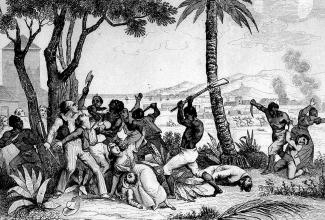
In the thick woods of Bois Caïman, hundreds of enslaved leaders from nearby plantations gathered in secret for a special ceremony that would forever go down in history.
Invocations poured through the night denouncing the white man’s god. Vodou mambo Cécile Fatiman offered a black pig to Haitian spirits, spilling its blood as a sworn oath: to fight, to burn, to be free.
Within days, plantations across the north were in flames. The uprising spread through the colony, and that night became the spark that lit the Haitian Revolution, the first rebellion of enslaved people to win independence and create a free Black republic.
But whose version of this story survived… and whose was silenced?
In colonial records, the night was described as “superstitious rites” and “bloodthirsty religion.” Still, centuries later, Christian missionaries maintain the narrative, calling it a pact with the devil.
However, horror scholar Dr. Kinitra D. Brooks reminds us in a Black History Year podcast interview that such demonization taught us to fear our own sources of strength. What we’ve been taught to fear—the conjure woman, the hoodoo man, the rituals—is what actually kept us alive:
Many historians now say the story of Bois Caïman was likely full of embellishments, and was actually a mix of spiritual ceremony and tactical planning for revolt. What we know for sure is that they came together to reclaim their freedom.
The real horror isn’t what happened that night, but how it’s been distorted. Because the people at Bois Caïman were conjuring liberation, not demons.